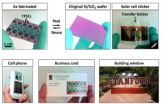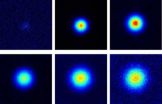(Press-News.org) PHILADELPHIA — The use of androgen deprivation therapies to prevent precancerous prostate abnormalities developing into aggressive prostate cancer may have adverse effects in men with precancers with specific genetic alterations, according to data from a preclinical study recently published in Cancer Discovery, a journal of the American Association for Cancer Research.
"The growth and survival of prostate cancer cells are very dependent on signals that the cancer cells receive from a group of hormones, called androgens, which includes testosterone," said Thomas R. Roberts, Ph.D., co-chair of the Department of Cancer Biology at the Dana-Farber Cancer Institute and professor of biological chemistry and molecular pharmacology at Harvard Medical School in Boston, Mass.
Previous findings from two major randomized, placebo-controlled prostate cancer chemoprevention trials revealed that androgen deprivation therapy reduced the overall risk for low-grade prostate cancer. However, both trials also revealed a high cumulative risk for high-grade prostate cancers that has caused concern among experts.
High-grade prostatic intraepithelial neoplasia is a prostate abnormality that is considered to be a major precursor to prostate cancer. Loss of the tumor suppressor PTEN is detected in 9 to 45 percent of clinical cases.
Using a mouse model of PTEN-driven high-grade prostatic intraepithelial neoplasia, Roberts and his colleagues investigated whether surgical or chemical androgen deprivation could prevent the cancer precursor from progressing to more aggressive disease.
"When we castrated the animals, we thought the tumors would shrink and they did initially," Roberts said. "However, they then grew back and became invasive."
The results of this preclinical study suggest that prophylactic reduction of the most active form of androgen, or blocking androgen receptor function, might have unintended consequences in some men.
"Stretching our data even further, these findings suggest that as men age and their testosterone levels decrease, loss of testosterone might actually encourage indolent prostate tumors to become more aggressive," Roberts said. "This suggests that testosterone supplements might be a good thing for the prostate, even though current wisdom suggests the opposite."
Roberts noted that these results should be interpreted with caution because the prostate glands of mice are different from their human counterparts. More data on human tumors are needed to evaluate whether the data from this mouse study are applicable to men.
###
Follow the AACR on Twitter: @aacr #aacr
Follow the AACR on Facebook: http://www.facebook.com/aacr.org
About the American Association for Cancer Research
Founded in 1907, the American Association for Cancer Research (AACR) is the world's first and largest professional organization dedicated to advancing cancer research and its mission to prevent and cure cancer. AACR membership includes more than 34,000 laboratory, translational and clinical researchers; population scientists; other health care professionals; and cancer advocates residing in more than 90 countries. The AACR marshals the full spectrum of expertise of the cancer community to accelerate progress in the prevention, biology, diagnosis and treatment of cancer by annually convening more than 20 conferences and educational workshops, the largest of which is the AACR Annual Meeting with more than 17,000 attendees. In addition, the AACR publishes seven peer-reviewed scientific journals and a magazine for cancer survivors, patients and their caregivers. The AACR funds meritorious research directly as well as in cooperation with numerous cancer organizations. As the scientific partner of Stand Up To Cancer, the AACR provides expert peer review, grants administration and scientific oversight of team science and individual grants in cancer research that have the potential for near-term patient benefit. The AACR actively communicates with legislators and policymakers about the value of cancer research and related biomedical science in saving lives from cancer.
For more information about the AACR, visit www.AACR.org.
Preventing prostate cancer through androgen deprivation may have harmful effects
2012-12-20
ELSE PRESS RELEASES FROM THIS DATE:
Cellular patterns of development
2012-12-20
KANSAS CITY, MO – For a tiny embryo to grow into an entire fruit fly, mouse or human, the correct genes in each cell must turn on and off in precisely the right sequence. This intricate molecular dance produces the many parts of the whole creature, from muscles and skin to nerves and blood.
So what are the underlying principles of how those genes are controlled and regulated?
At the most basic level, scientists know, genes are turned on when an enzyme called RNA polymerase binds to the DNA at the beginning of a gene. The RNA polymerase copies the DNA of the gene into ...
Gladstone scientists identify powerful infection strategy of widespread and potentially lethal virus
2012-12-20
SAN FRANCISCO, CA—December 20, 2012—Scientists at the Gladstone Institutes have mapped the molecular mechanism by which a virus known as cytomegalovirus (CMV) so successfully infects its hosts. This discovery paves the way for new research avenues aimed at fighting this and other seemingly benign viruses that can turn deadly.
Not all viruses are created equal. Some ravage the body quickly, while others—after an initial infection—lie dormant for decades. CMV is one of the eight types of human herpes viruses, a family of viruses that also include Epstein-Barr virus (which ...
Dragonflies have human-like 'selective attention'
2012-12-20
In a discovery that may prove important for cognitive science, our understanding of nature and applications for robot vision, researchers at the University of Adelaide have found evidence that the dragonfly is capable of higher-level thought processes when hunting its prey.
The discovery, to be published online today in the journal Current Biology, is the first evidence that an invertebrate animal has brain cells for selective attention, which has so far only been demonstrated in primates.
Dr Steven Wiederman and Associate Professor David O'Carroll from the University ...
Origin of life emerged from cell membrane bioenergetics
2012-12-20
A coherent pathway which starts from no more than rocks, water and carbon dioxide and leads to the emergence of the strange bio-energetic properties of living cells, has been traced for the first time in a major hypothesis paper in Cell this week.
At the origin of life the first protocells must have needed a vast amount of energy to drive their metabolism and replication, as enzymes that catalyse very specific reactions were yet to evolve. Most energy flux must have simply dissipated without use.
So where did it all that energy come from on the early Earth, and how ...
A urine test for a rare and elusive disease
2012-12-20
Boston, Mass.—A set of proteins detected in urine by researchers at Boston Children's Hospital may prove to be the first biomarkers for Kawasaki disease, an uncommon but increasingly prevalent disease which causes inflammation of blood vessels that can lead to enlarged coronary arteries and even heart attacks in some children. If validated in more patients with Kawasaki disease, the markers could make the disease easier to diagnose and give doctors an opportunity to start treatment earlier.
The discovery was reported online by a team led by members of the Proteomics Center ...
First ever 'atlas' of T cells in human body
2012-12-20
New York, NY (December 20, 2012) — By analyzing tissues harvested from organ donors, Columbia University Medical Center (CUMC) researchers have created the first ever "atlas" of
immune cells in the human body. Their results provide a unique view of the distribution and function of T lymphocytes in healthy individuals. In addition, the findings represent a major step toward development of new strategies for creating vaccines and immunotherapies. The study was published today in the online edition of the journal Immunity.
T cells, a type of white blood cell, play a major ...
Peel-and-Stick solar panels from Stanford engineering
2012-12-20
For all their promise, solar cells have frustrated scientists in one crucial regard – most are rigid. They must be deployed in stiff, often heavy, fixed panels, limiting their applications. So researchers have been trying to get photovoltaics to loosen up. The ideal: flexible, decal-like solar panels that can be peeled off like band-aids and stuck to virtually any surface, from papers to window panes.
Now the ideal is real. Stanford researchers have succeeded in developing the world's first peel-and-stick thin-film solar cells. The breakthrough is described in a ...
Cellphone, GPS data suggest new strategy for alleviating traffic tie-ups
2012-12-20
Asking all commuters to cut back on rush-hour driving reduces traffic congestion somewhat, but asking specific groups of drivers to stay off the road may work even better.
The conclusion comes from a new analysis by engineers from the Massachusetts Institute of Technology and the University of California, Berkeley, that was made possible by their ability to track traffic using commuters' cellphone and GPS signals.
This is the first large-scale traffic study to track travel using anonymous cellphone data rather than survey data or information obtained from U.S. Census ...
Research pinpoints key gene for regenerating cells after heart attack
2012-12-20
DALLAS – Dec. 20, 2012 – UT Southwestern Medical Center researchers have pinpointed a molecular mechanism needed to unleash the heart's ability to regenerate, a critical step toward developing eventual therapies for damage suffered following a heart attack.
Cardiologists and molecular biologists at UT Southwestern, teaming up to study in mice how heart tissue regenerates, found that microRNAs – tiny strands that regulate gene expression – contribute to the heart's ability to regenerate up to one week after birth. Soon thereafter the heart loses the ability to regenerate. ...
Shedding light on Anderson localization
2012-12-20
This press release is available in German.
Waves do not spread in a disordered medium if there is less than one wavelength between two defects. Physicists from the universities of Zurich and Constance have now proved Nobel Prize winner Philip W. Anderson's theory directly for the first time using the diffusion of light in a cloudy medium.
Light cannot spread in a straight line in a cloudy medium like milk because the many droplets of fat divert the light as defects. If the disorder – the concentration of defects – exceeds a certain level, the waves are no longer ...




